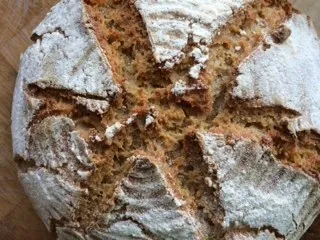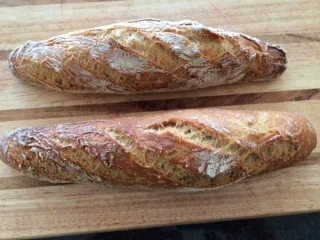67% Whole 10 Grain Baguettes

After seeing Phyllis’s fine baguettes based on David Snyder’s San Joaquin recipe this week, we decided that we would do some baguettes to practice slashing - it’s been at least a year. Plus the he date of Lucy’s Mom’s untimely death is approaching and that requires some kind slashing, no matter what, in her honor – lighting a candle just won’t do.
- Log in or register to post comments
- 24 comments
- View post
- dabrownman's Blog











